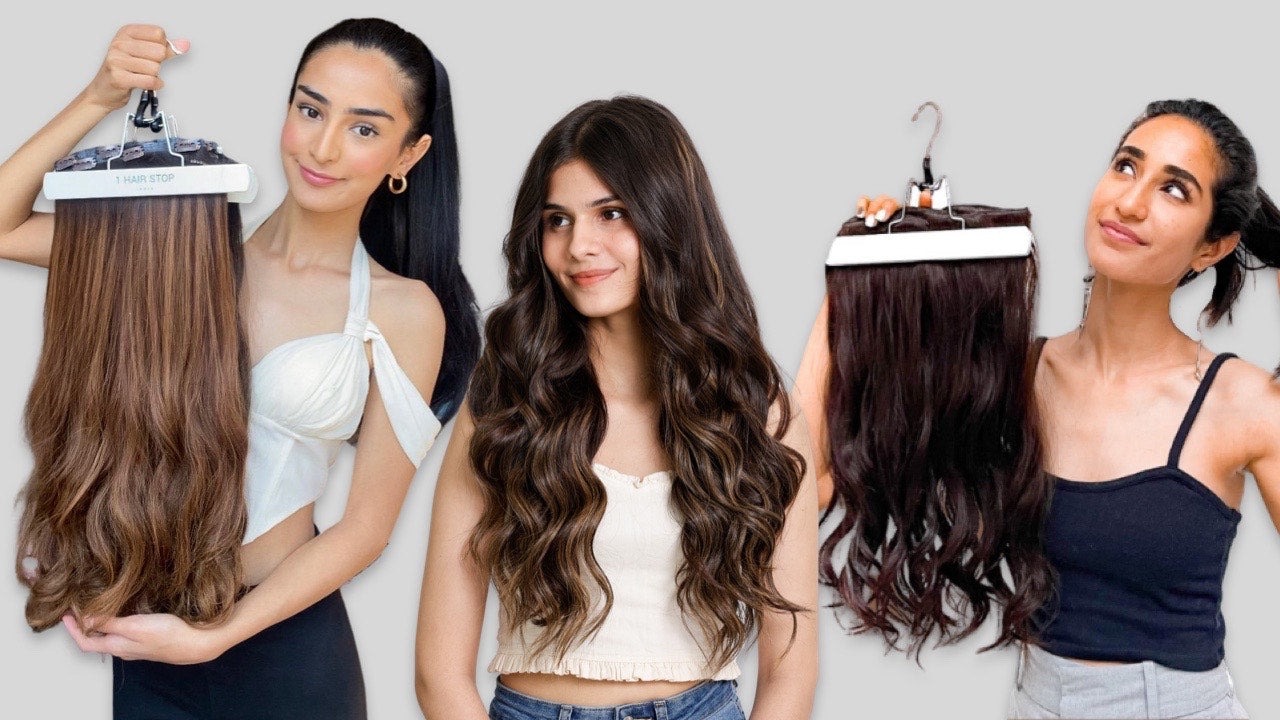Hair extensions have become a go-to solution for those looking to add length, volume, or even a pop of color to their hair without the commitment of permanent changes. Whether you’re new to the world of hair extensions or a seasoned pro, understanding the different types, applications, and maintenance tips is key to getting the most out of your hair extensions. In this comprehensive guide, we’ll walk you through everything you need to know about hair extensions, including the benefits, types, application methods, and how to care for them to ensure they look their best.
1. Why Choose Hair Extensions?
Hair extensions offer a range of benefits, making them a popular choice for anyone looking to enhance their hairstyle.
- Instant Length and Volume: One of the most obvious benefits of hair extensions is the ability to instantly add length and volume to your hair. Whether you’re dealing with a bad haircut or simply want to achieve long, flowing locks, extensions can give you the look you desire in a matter of minutes.
- Versatility in Styling: Hair extensions provide the flexibility to experiment with different hairstyles without making permanent changes to your natural hair. Want to try out bangs, layers, or a new color? Extensions let you play with your style without the commitment.
- Enhance Hair Thickness: For those with thinning hair, extensions can provide much-needed volume and thickness. They blend seamlessly with your natural hair, making it look fuller and more vibrant.
- Special Occasions: Hair extensions are perfect for special occasions where you want to look your best, such as weddings, proms, or photoshoots. They can elevate your hairstyle, making it look more glamorous and polished.
2. Types of Hair Extensions
When it comes to hair extensions, there are several types to choose from, each with its own unique benefits and application methods.
- Clip-In Hair Extensions: Clip in hair extensions are the most popular and easiest type to use. They come in wefts with clips attached, allowing you to clip them into your hair quickly and easily. This type is perfect for those who want a temporary solution or like to change their hairstyle frequently.
- Tape-In Hair Extensions: Tape-in extensions are thin, adhesive strips of hair that are applied to small sections of your natural hair. They lie flat against your scalp, making them almost undetectable. Tape-in extensions can last for several weeks and are a great option for those looking for a semi-permanent solution.
- Sew-In (Weave) Extensions: Sew-in extensions, also known as weaves, involve braiding your natural hair into cornrows and sewing the wefts of hair extensions onto the braids. This method is popular among those with thicker hair and offers a more long-lasting solution.
- Fusion Hair Extensions: Fusion extensions use a keratin-based adhesive to bond the extensions to your natural hair. This method provides a very natural look and can last for several months, but it requires professional application and removal.
- Micro-Link (Bead) Extensions: Micro-link extensions involve attaching small wefts of hair to your natural hair using tiny metal beads. This method doesn’t require heat or adhesives, making it a gentler option for your hair.
- Hair Toppers: While not traditional extensions, hair toppers are worth mentioning. They are used to cover thinning or balding areas on the top of the head, blending with your natural hair to create a fuller look. They can be clipped in and are a great option for those dealing with hair loss.
3. Choosing the Right Hair Extensions
Selecting the right hair extensions depends on several factors, including your hair type, lifestyle, and desired look.
- Hair Type: Consider your hair’s thickness, texture, and length when choosing extensions. For example, clip-ins might work well for those with fine hair, while sew-ins may be better suited for thicker hair.
- Desired Look: Think about what you want to achieve with your extensions. Are you looking for more volume, length, or both? Do you want to experiment with color? Your goals will help determine the best type of extensions for you.
- Lifestyle: Your daily routine and lifestyle should also influence your choice. If you lead an active lifestyle, you might prefer extensions that are easy to remove, like clip-ins. If you want something more permanent, tape-ins or fusion extensions might be a better fit.
4. Application and Maintenance
Proper application and maintenance are key to ensuring your hair extensions look natural and last as long as possible.
- Application: While some extensions, like clip-ins, can be applied at home, others, such as tape-ins and fusion extensions, require professional installation. It’s important to follow the instructions carefully or seek a professional’s help to ensure the extensions are applied correctly.
- Blending: For a seamless look, make sure the extensions blend well with your natural hair. This includes matching the color and texture. You may need to cut or style the extensions to match your haircut.
- Daily Care: Just like your natural hair, extensions require regular care. Brush them gently with a soft-bristle brush to avoid tangling and damage. When washing your hair, use sulfate-free shampoos and conditioners to keep the extensions in good condition.
- Styling: While human hair extensions can be styled with heat tools, it’s important to use a heat protectant spray to prevent damage. Synthetic extensions, on the other hand, may not be heat-resistant, so be sure to check the care instructions before styling.
- Sleeping: To prevent tangling while you sleep, tie your hair in a loose braid or ponytail and sleep on a silk or satin pillowcase. This will reduce friction and help keep your extensions smooth and tangle-free.
- Maintenance: Depending on the type of extensions you choose, maintenance may involve regular salon visits for adjustments or touch-ups. For example, tape-in and fusion extensions need to be repositioned or replaced every few weeks as your natural hair grows.
5. Human Hair Wigs vs. Hair Extensions: Which Is Right for You?
While hair extensions are a great option for adding length and volume, human hair wigs offer a full-coverage solution for those dealing with more extensive hair loss or who want to completely change their look.
- Hair Extensions: Best for those looking to enhance their natural hair by adding length, volume, or color. They blend with your existing hair and are available in temporary, semi-permanent, and permanent options.
- Human Hair Wigs: Ideal for those who want a full hair transformation or are dealing with significant hair loss. Human hair wigs offer a natural look and can be styled just like your own hair.
6. The Benefits of Investing in High-Quality Hair Extensions
Investing in high-quality hair extensions can make a significant difference in how they look and how long they last.
- Natural Appearance: High-quality extensions are made from 100% human hair, ensuring they blend seamlessly with your natural hair and can be styled with heat tools.
- Longevity: While cheaper synthetic extensions may only last a few weeks, human hair extensions can last several months with proper care, making them a better long-term investment.
- Comfort: Quality extensions are often lighter and more comfortable to wear, reducing the risk of damage to your natural hair and scalp.
Conclusion
Hair extensions offer endless possibilities for enhancing your hairstyle, whether you’re looking for a temporary change or a long-term solution. By understanding the different types of extensions, how to apply and care for them, and the benefits they offer, you can make an informed decision and choose the best extensions for your needs. Whether you opt for clip-in hair extensions, tape-ins, or another type, investing in quality extensions and maintaining them properly will help you achieve the beautiful, voluminous hair you’ve always wanted.



